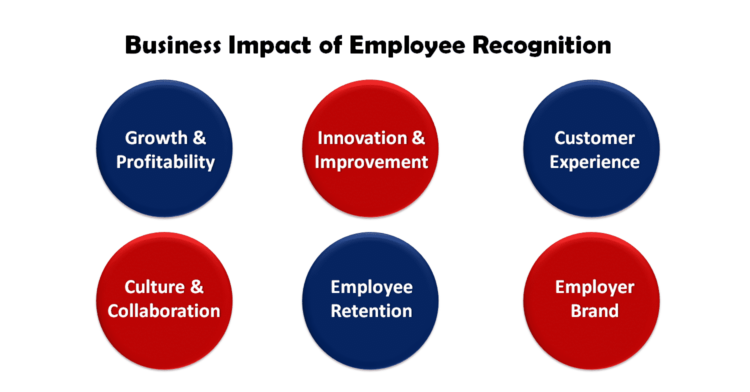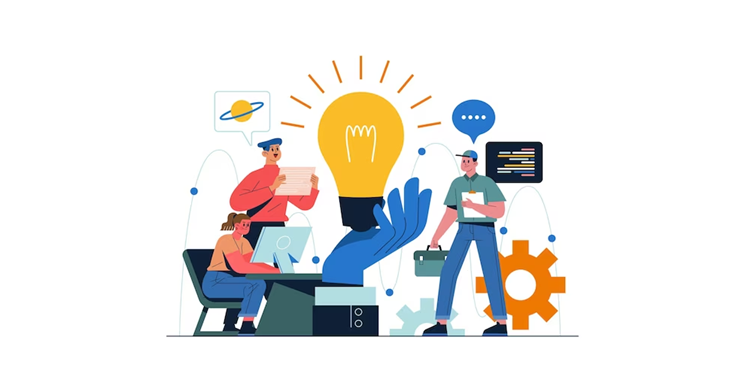1. Boosts Business Growth and Profitability: Employee recognition enhances motivation and productivity, leading to more significant business growth, cost efficiency, and profitability.
2. Encourages Innovation and Process Improvement: Recognized employees feel valued and motivated to contribute innovative solutions and improve processes, driving organizational progress.
3. Improves Customer and Employee Experience: Engaged employees provide exceptional customer service and help build a positive company culture, fostering collaboration and loyalty.
4. Enhances Retention and Employer Branding: Effective recognition programs reduce turnover rates, lower hiring costs, and strengthen the employer brand, attracting top talent and promoting a positive reputation.
Employee recognition plays a critical role in effectively driving the motivation levels of the workforce. Hence, organizations must understand how employee recognition impacts their business and invest in such programs to maximize returns.

In simple words, recognition is the process of making the employees aware that their work is much appreciated and valued by the organization.
Recognition can either be formal or informal. Either way, it sends out a strong positive message to the employees.
So, here are a few critical facts about employee recognition:
1. Effective and timely recognition is one of the top drivers of engagement in the workplace
5. A good recognition policy can increase employee productivity by 78%.
Organizations look towards maximizing growth and profitability through optimal utilization of the knowledge, skills, and expertise of their workforce. Employee recognition plays a key role in this.
Here are the top benefits of employee recognition for the business:
1. Higher Business Growth and Profitability
2. Enhanced Innovation and Process Improvement
3. Exceptional Customer Experience
4. Positive Company Culture and Collaboration
5. Higher Employee Retention
6. Stronger Employer Brand


When employees feel valued for their work and contribution to the business’s success, they feel a sense of pride and ownership.
This makes them work even harder to drive business growth further.
Recognition also motivates them to be more productive and cost-efficient. Hence, employee recognition can impact business growth and profitability.

Recognition is one of the biggest drivers of employee engagement and motivation.
Employees when recognized for their performance develop a strong sense of belonging to the organization and this inspires them to seek innovative solutions to business problems.
Also, they would look to improve business processes to make them more efficient and cost-effective.

Also, employee experience goes hand-in-hand with customer experience.
Hence, happy and satisfied employees are likely to be more committed to ensuring customer satisfaction.
Hence, employees recognized for their work will likely be more driven to manage existing customers and attract new clients by providing a truly exceptional experience.

Employee recognition policies can contribute significantly to building a positive company culture.
Finally, a positive work culture creates mutual trust and respect among coworkers and strengthens their camaraderie.
This ensures they collaborate more, show a greater willingness to share knowledge, and support each other when required.

One of the most prominent challenges organizations face today is retaining top talent.
Therefore, proper and timely recognition can make employees feel valued and loyal to the organization. Loyal employees are less likely to seek job opportunities elsewhere.
Hence, a good employee recognition program can reduce voluntary turnover rates, lowering hiring and training costs.

Today, all organizations understand the significance of having a strong employer brand to keep attracting top talent from the industry.
The employees of organizations with good employee recognition programs are more likely to spread the ‘good word’ about their organizations.
They are also more likely to refer others from their professional and personal networks.
An effective employee recognition program can provide multiple benefits to the organization.
Hence, they must take the proper steps to create and manage such programs.
So, here are a few tips in this regard:

1. Ensure the recognition program is specific, well-documented, and measurable.
2. Clearly define the criteria for employee recognition.
3. Offer recognition for driving results in line with the business objectives.
4 Give recognition for displaying behavior in line with the organization’s values and culture.
5. Leverage technology to make processes more efficient and experience more user-friendly.
6. Retain the human touch in the program as much as possible.
Read the Step-by-Step Guide on How to Set up an Employee Recognition Program
Organizations that have a deep understanding of how employee recognition impacts business can develop relevant programs that are aligned with their business objectives, organizational culture, and workforce profile and get the desired results.

Lead author: Sagar Chaudhuri, the Co-Founder and CEO of HiFives. He is an HR Tech Evangelist with over 25 years of corporate and entrepreneurship experience. In the past, Sagar has worked in leadership roles with companies such as Genpact, Infosys, and ICICI Bank. He has an engineering degree from IIT Kharagpur and an MBA from IIM Lucknow. Connect on LinkedIn
To stay updated on the latest HiFives blogs, follow us on Twitter (@MyHiFives)